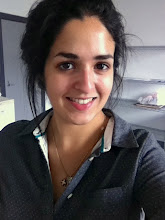“Reanimating the Dead: Reconstruction of Expressive Faces from Skull Data” – Kahler, Haber, Seidel
- Purpose: provide facial reconstruction approach that fits an anatomy based virtual head model
- facial reconstruction for postmortem identification of humans is challenging
- one of most popular tissue reconstruction methods bears many resemblances to surface fitting techniques on the computer
- manual reconstruction builds on the tight shape relationships between skull and skin
- 1935 – first documented case using 3D facial reconstruction
- not only correlation between skull and skin, but also muscle activity and skull shape
- the preparation of the skull is the beginning of the process of facial reconstruction
o also, dental analysis
- face reconstruction proceeds with approaches: 1) anatomical method, 2) tissue depth method
o anatomical method is through sculpting and takes a lot of time. Tissue depth method preferred, in which standard sets of tissue thickness measurements at specific points of the face are used.
o Computer graphics perspective
– surface interpolation problem
- Computer graphics in forensic application are still limited/simple
- Facial template chosen from a database of scanned faces
o Tissue thickness values
- Variety of techniques exist to create face models from images or scan data
o Deforming generic head model using radial basis functions
- 3D skull data acquired from volume scans and extraction of bone layers
o have physical skull on hand as reference
- skull model has landmarks, which can be manipulated
- head skull model has: 1) skin surface 2) virtual muscles (to control animation) 3) mass-spring system 4) landmarks
- tissue depth values at marker positions define the basic shape of the reconstructed head
- to keep user interface uniform, there is placement of vertical and horizontal line guides on the frontal view of the skull
- rules that influence the shape of the nose and mouth
- neutral pose of the face is preferred as the most generic facial expression in manual facial reconstructions
o however, virtual reconstruction allows for various expressions
o need a controllable tongue, eyeballs, and eye lids to allow for animation
- when actual appearance of individual is unknown, the accuracy of the reconstruction can only be guessed at
o Reconstruction plausible
- Results – overall good reproduction of facial shape and proportions, with well-matched details
o Takes less than a day to create reconstructed face model
- 3D scans – contact free interaction with physical skull, but scanning process is not so detailed
- tissue depth values should not be taken at face value in 3D facial reconstruction, but act as guides instead final facial reconstruction still relies heavily on artistic skills and intuition

No comments:
Post a Comment